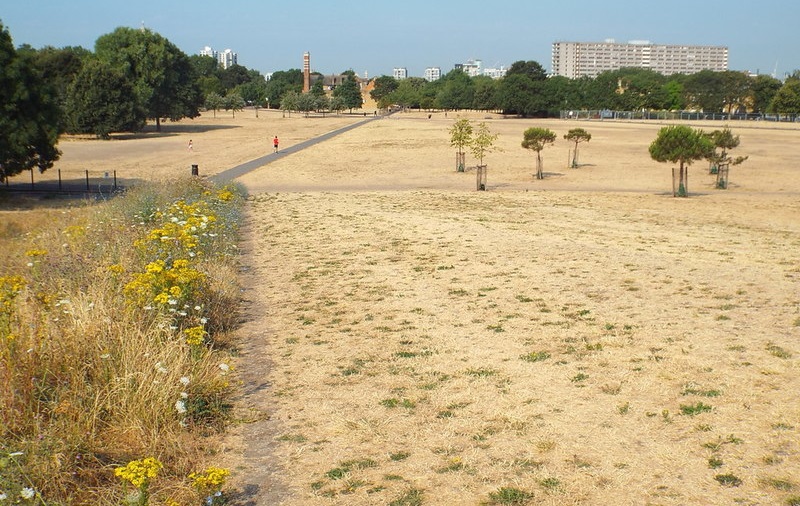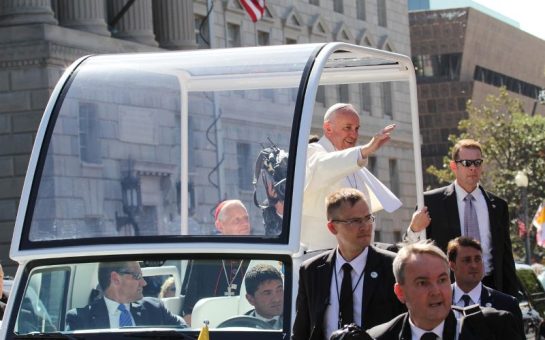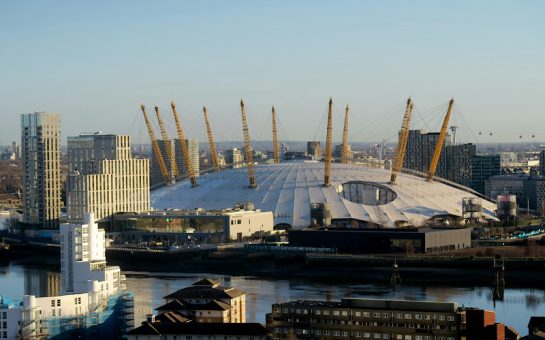As London faces yet another heatwave, with temperatures set to pass 30 degrees this week, the reality of climate change in cities becomes more apparent.
Only once before in the history of humankind – around 100,000 years ago – has our species lived on a planet so hot.
One of the key differences compared to the last time humans experienced global average temperatures of this kind is that 55% of people on the planet now live in urban areas – where the impacts of climate change are amplified.
According to a 2020 study, by 2070, almost three billion people could be living in areas deemed too hot for humans to survive, revealing that for every 1°C of warming, one billion people will either need to migrate to cooler climates or adapt to extreme levels of heat.
In particular, the number of cities around the world exposed to extreme temperatures is set to almost triple over the coming decades.
By 2050, around two thirds of the world’s population are predicted to be urban dwellers, reaching 85% by the end of the century.
Combined with a global ageing population, both these trends are set to expose even greater proportions of vulnerable people to the harmful consequences of potentially fatal excess heat.
Unlike their surrounding rural areas, cities are prone to overheating from what’s known as the ‘Urban Heat Island’ (UHI) effect, which can cause temperatures to be up to 8oC warmer than the surrounding countryside.
This is due to the sun’s rays being absorbed by cities’ hard surfaces rather than trees and grass, subsequently releasing this back into the air as heat.
Colin Cooper, CEO of Twickenham-based environment charity Habitats & Heritage, said: “Where there is a built-up environment – streets, houses, buildings – this traps heat and these areas become hotter in a heatwave.
“If you look at a heat map of London during a heatwave, you’ll see that some of the large parks – Richmond Park, Bushy Park, Regent’s Park, Hyde Park – are much cooler than the surrounding streets and buildings.”
On top of this effect, heatwaves are also becoming far more likely and more intense because of climate change.
Heatwaves across India and Pakistan in April, for example, brought with them temperatures of more than 50°C – and according to climatologists, these were made 30 times more likely by climate change.
Whilst London is yet to experience extreme temperatures like those in cities like Delhi, the capital is not immune to climate change induced extreme weather events and heat-related deaths.
A study by researchers at University College London (UCL) and the University of Reading published in March this year found that temperature-related deaths in England and Wales are set to increase 42% during the hottest days of the year under a warming scenario of 2°C from pre-industrial levels.
This represents an increase from around 117 to 166 deaths per day.
Estimates for two heatwaves in summer 2021 in July and September indicate that there were 1,634 excess deaths in England – 80% of which were people aged 75 and older.
A total of 158 of all excess deaths during this time were in London.
Research has shown that heat mortality is likely to be highest in the city’s outskirts, due to the number of elderly residents in the suburbs.
Temperatures of up to 34oC have already been felt in parts of London and the south east this year – and are expected to reach these levels again this week.
A Level 3 Heat-Health alert for London is currently in place, providing a warning for emergency services to prepare for increases in demand due to the rising heat.
So what is London doing to help keep vulnerable residents cool? And what can Londoners do to mitigate, cope, and adapt to the heat?
To provide city dwellers with a range of places in which to take respite on hot days, the Mayor of London has released a “Cool Spaces” map, which showcases indoor and outdoor spaces across the city where people can take a break when the weather gets too warm.
It includes areas where there is tree canopy cover, as well as places to refill water bottles.
Cool Spaces can be put forward by boroughs, community groups, faith-based groups, and cultural organisations before being validated based on a set of criteria.
As well as a place to enjoy the shade, tree canopy cover is a particularly important part of the fight in keeping cities cool, as highlighted by Cooper.
He said: “A solutions to having cooler streets is planting more street trees, as they provide shade and give out moisture.
“There’s been scientific studies of temperatures of streetscapes – one in streets where there are no street trees, just hard surfaces, pavements, roads, curbs, and then buildings to the side, versus where trees have been planted.
“And you can clearly see the fundamental difference in temperatures.”
As well as city-wide initiatives, there are also ways Londoners can keep their homes cool – and Cooper noted that we have lessons to learn from how other European countries cope with the heat.
He said: “You need to keep windows shut during the peak hours of the day.
“A lot of the windows we have open outwards, and obviously they catch heat that rises from the ground or from the walls underneath windows and diverts that into the building.
“That can be stopped by keeping windows closed and keeping your curtains closed until after the sun has passed or after the peak of the heat has passed.”
When it comes to other ways of reducing temperatures inside in the short term, Cooper says we need to think twice before switching on the AC.
He added: “Because of climate change, and during heat waves, there’s a movement for people to install air conditioning where there isn’t enough air conditioning installed already.
“Of course, that provides a feedback loop because air conditioning uses electricity, which means more energy with this high carbon intensive energy production emitting more CO2.”
And it’s not just our homes that will need to adapt to rising temperatures.
Cooper added: “On a personal level, if you’re going out in the streets, and you can’t avoid that, then wear clothing that’s appropriate to the conditions.
“Linen is a really good material to wear, as it allows you to breathe through it, but is also quite cooling and allows you to sweat as well, which is important to regulate your temperature.
“Keeping your head covered with a hat or even an umbrella can help stop the body warming up absorbing the temperature from the sun.”
“If you’ve got a choice of streets to walk down to reach your end destination, can you walk down a street that has more street trees in it where you can keep in the shade? Can you walk through streets where the buildings themselves cast shade? These are all things we need to start thinking about as heatwaves become from frequent.
“We just need to think about these things in a bit more detail really and working at ways we can adapt.
“It’s not beyond the wit of man to do this – many other countries have suffered these kinds of temperatures for a long period of time. They’re just better adapted to it and so over time have adopted different behaviour to cope with it.
“Make those that you help out those you know, particularly the vulnerable and the elderly. If they’re unable to go to the shops in the scorching sun, we need to make sure neighbours friends and family help.
“Get shopping for people and look after your friends and family.”
To register a site for Cool Spaces, fill in the Cool Spaces form here. Submissions will be reviewed and included in the map’s next update.
Featured image © Copyright Malc McDonald and licensed for reuse under this Creative Commons Licence





